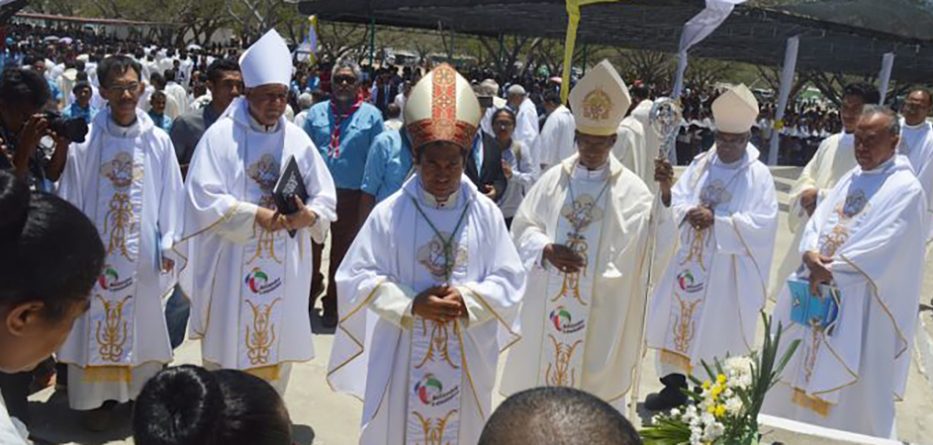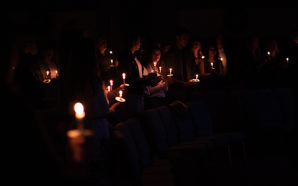Pope St John Paul celebrated Holy Mass at the esplanade of Tasitolu in the capital Dili on October 12, 1989.
More than 5,000 East Timorese Catholics gathered in their capital Dili on Wednesday 30 October, to commemorate the pastoral visit of Pope Saint John Paul II to Timor-Leste in 1989.
Archbishop Virgilio do Carmo da Silva of Dili presided over an open-air concelebrated Mass at Tisitolu esplanade with several other bishops. Representatives of the Indonesian and Australian Church also participated in the October 30 event.
East Timorese Bishop Norberto do Amaral of Maliana called on the Christians in Asia’s most Catholic nation to be faithful to Christ as shown by Pope St. John Paul II who kissed the soil of the land when he set foot on it 30 years ago when it was part of Indonesia.
“That was the moment when the world began to know the Timorese struggle for independence,” Bishop do Amaral said. “The Holy Father loved this country so much, and as Catholics, we also have to work towards transformation, solidarity and peace as children of God,” the prelate said.
A Portuguese colony since the 16th century, Timor-Leste declared independence when the Portuguese left on 28 November 1975. However, neighbouring Indonesia invaded and annexed it on 17 July, the following year. An often violent 24-year resistance movement took Timor-Leste to independence on 20 May 2002 following a 1999 United Nations-backed referendum.
Youth, the future face of nation and Church
Among those who participated in Wednesday’s commemoration were hundreds of children from parishes throughout the country.
Archbishop Da Silva appreciated the children’s participation, saying that Timor-Leste as a Catholic majority country must become a model for everyone and the Church was counting on young people.
He said that the message of Pope St. John Paul II was also meant to invite young people to bring the Good News to society.
“Whoever is baptised, including children, are obliged to participate in Christ’s mission, beginning with simple things at home, being respectful to parents, and not doing something against our conscience,” Archbishop Da Silva said.
“The church needs you, the parish you belong to needs you,” the archbishop said.
He said Pope St. John Paul II wanted the people of Timor-Leste “to be a little candle in your own family and avoid domestic violence.”
Father Mouzinho Pereira Lopes, the director of the Pontifical Mission Society in Timor-Leste, said children and teenagers will be the face of Christ in years to come. “So, we have to make them aware that they are the salt and light, just as when John Paul II called on Timorese to be the salt and light to the world,” he said.
Government grateful to Church
In an address to the nation after the Mass, President Francisco Guterres expressed the government’s gratitude to the Catholic Church for its contribution during the country’s struggle for independence.
“The visit of Holy Father John Paul II 30 years ago was a way in which he wanted to listen directly the cries and the struggle of the people,” Guterres said.
He noted that a demonstration of young people after the Papal Mass received a boost despite the heavy presence of the Indonesian military.
The president said the government has established a monument of Pope St. John Paull II on Tasitolu Hill as a symbol of hope for the people of Timor-Leste.
He said 17 years after independence, Timor-Leste’s people have to strengthen their Christian values such as solidarity and brotherhood to eliminate poverty.
“No one should be neglected, but encourage one another as one country, Timor-Leste,” Guterres urged.
With thanks to UCANews, Vatican News and Robin Gomes, where this article originally appeared.








